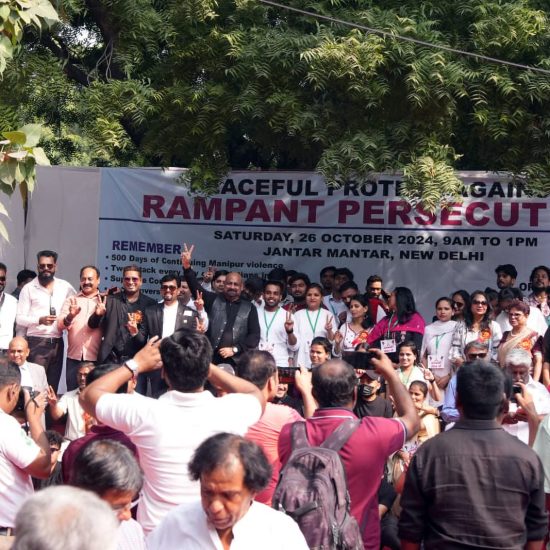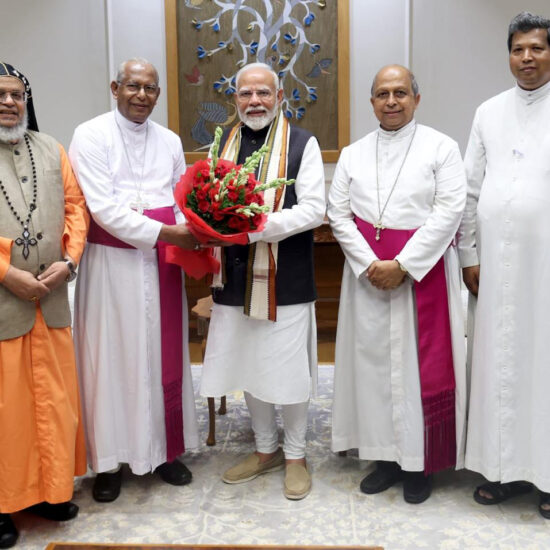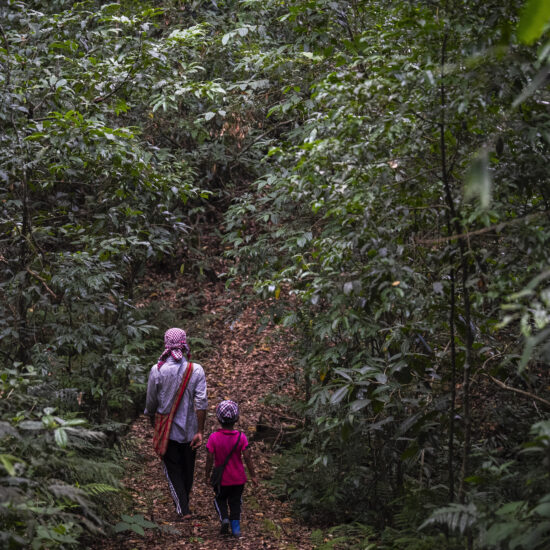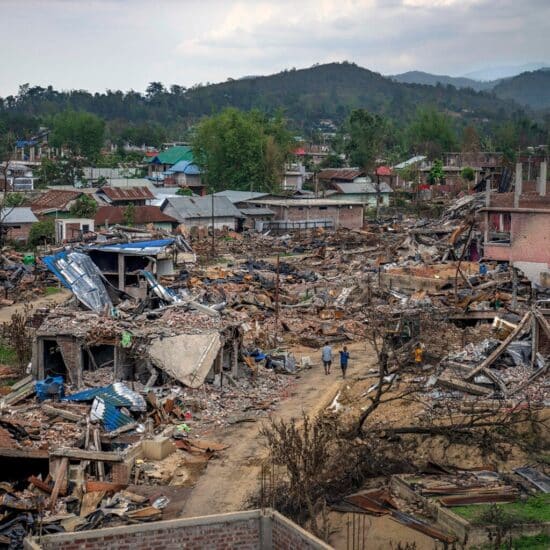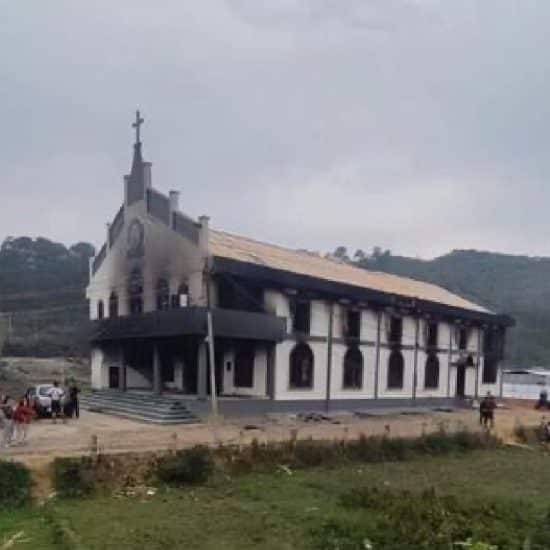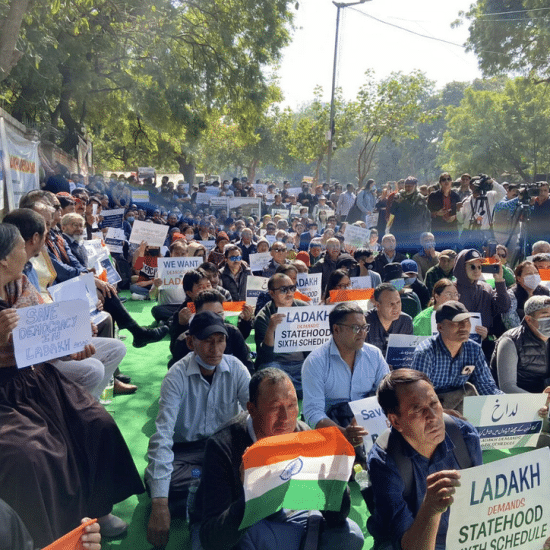On the campus of the Council of Baptist Churches in North East India (a regional Baptist body) in the city of Guwahati, tall trees reach up toward the heavens. American Baptist missionaries planted some of those before turning over the work over to nationals in 1950. Like those trees, the roots of the work established by missionaries continue to grow and produce fruit today — and like those trees, the work is even larger and more beautiful than during the missionary era. As A.K. Lama, former general secretary of the CBCNEI, noted, “many of the missionaries gave the best years of their lives, but they made a difference.”
 A.K. Lama, former general secretary of the Council of Baptist Churches in North East India (Photo by Brian Kaylor/Word&Way)While British Baptist missionary William Carey first arrived in India in 1793, the work developed slower in North East India — a sliver jutting off what those in the North East call “mainland India.” The first Baptist to preach in the North East was Krishna Pal, the first Indian convert of Carey. A British missionary, James Rae, arrived in the region in 1819 and helped started a Baptist church in Guwahati in 1836. But he and another British missionary left the region by 1838.
A.K. Lama, former general secretary of the Council of Baptist Churches in North East India (Photo by Brian Kaylor/Word&Way)While British Baptist missionary William Carey first arrived in India in 1793, the work developed slower in North East India — a sliver jutting off what those in the North East call “mainland India.” The first Baptist to preach in the North East was Krishna Pal, the first Indian convert of Carey. A British missionary, James Rae, arrived in the region in 1819 and helped started a Baptist church in Guwahati in 1836. But he and another British missionary left the region by 1838.
The first American Baptists arrived in the area in 1836 on the suggestion of a British official experimenting with growing tea in the region. The missionaries, though, came with the goal of evangelizing China since they were not allowed to live in that bordering nation. Those missionaries — Nathan and Eliza Brown and Oliver and Harriet Cutter — eventually, turned their focus to ministering in the midst of what CBCNEI’s website history section calls “dense jungles, hostile tribes and rugged hills.” They also arrived in the midst of tribal groups waging war against the British.
They baptized their first convert in 1841 — five years after settling in the region and after the deaths of multiple American Baptist missionaries from illness or accident. After learning the Assamese language and setting up a printing press, the missionaries created the first Assamese magazine in 1846 and a translation of New Testament books in 1848. In 1845, the first association of Baptist churches in the region was organized. Eventually, the work grew to the creation of the CBCNEI in 1950 to guide the work in the region that spans eight states and thirty language groups.
The work, however, nearly died in the mid-19th century as Southern Baptists split away, financial hardships emerged due in part to the U.S. Civil War and the American Baptist Mission Union overruled decisions by missionaries on the ground. After 22 missionaries worked in the state of Assam for 25 years, just 50 converts could be counted. Still, Baptists in the North East persevered. Some of the most prosperous outreach in the late 19th century, like that among the Garo people, was led by local converts when no U.S. missionaries could be appointed and came in the midst of persecution from Hindus upset at the conversions. By the 50th anniversary of Baptist work in the region, there were 30 churches and nearly 2,000 members with seven ordained local ministers.
In addition to the trees in Guwahati and many church buildings, other reminders of the missionaries remain. Temjen Sempo, associate pastor at Kohima Ao Baptist Church, noted that “when American Baptist missionaries came to Nagaland,” they started three services per week.
“We still have them 100 years later,” he added with a laugh.
Old Roots, New Growth
In “The Mighty Works of God,” Fredrick Downs tracks the history of Baptist work in North East India. The son of American missionaries in North East India, he and his wife later also served there. In his book, which the CBCNEI’s Christian Literature Centre publishes, he explains one reason the work almost died in the 1850s is the American Baptist Mission Union overruled missionaries in the field and shut down promising work.
“[The Board] argued that the differences between America and Asia were irrelevant as far evangelistic work is concerned because evangelism everywhere should follow the New Testament pattern,” he wrote. “They totally rejected the missionary argument that under different circumstances different methods must be used to win men to Christ.”
Although the American missionaries eventually regained more freedom in their ministry, the departure of American missionaries in the mid-20th century particularly proved their contention of local expertise correct. By that point, 297 American missionaries had served a total of 4,493 years in North East India. After handing the work over to national leaders, the witness not only survived, it continued to grow.
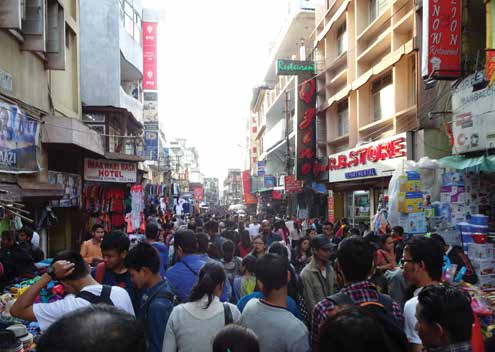 Market street in Shillong. Christians account for a majority of the population in four of the eight states in North East India. (Photo by Brian Kaylor/Word&Way)Today, there are over 7,800 churches in six conventions and 105 associations that comprise the CBCNEI. Many ministries — old and new — continue to guide the Baptist work in the region. Eastern Theological College continues to train leaders for Christian ministry more than 100 years after its founding — in addition to seven more Baptist seminaries in the region. The CBCNEI also oversees six hospitals, a conference center and student ministries, as well as a missions department and a justice and peace department. Additionally, the CBCNEI publishes a quarterly English-language magazine, Baptist News.
Market street in Shillong. Christians account for a majority of the population in four of the eight states in North East India. (Photo by Brian Kaylor/Word&Way)Today, there are over 7,800 churches in six conventions and 105 associations that comprise the CBCNEI. Many ministries — old and new — continue to guide the Baptist work in the region. Eastern Theological College continues to train leaders for Christian ministry more than 100 years after its founding — in addition to seven more Baptist seminaries in the region. The CBCNEI also oversees six hospitals, a conference center and student ministries, as well as a missions department and a justice and peace department. Additionally, the CBCNEI publishes a quarterly English-language magazine, Baptist News.
All of this creates a Baptist witness quite different from what can be found in other parts of India. This emerged in part because, as Lama explained, the North East is “a different context” than the rest of India. Differences include food styles, role of women and ethnicity. While raising cows for food could get one killed in parts of India, the North East allows beef eating. He noted Americans are viewed differently, with a more positive view in the North East thanks to the legacy of the missionaries.
Another significant difference comes in religion. Christians actually account for a majority of the population in four of the eight states in North East India — and Baptists account for more than 75 percent of the population in state of Nagaland, making it the most Baptist state or province in the world. While more than 17 percent of people in the North East are Christians, only two percent nationwide are Christians. Thus, while the North East contains less than four percent of India’s total population, it includes more than 28 percent of India’s Christian population. As Lama noted, “the North East is very churchy, like Southern Baptist [region].”
Yet, despite those strong roots, much work remains. Lama believes there are many “social and political challenges the region faces,” including economic ones since “the tribal areas of the North East India are far less developed” than other parts of the nation. Additionally, he notes, there are many militant groups fighting for independence from India — and this has impacted “almost all church members” in the region — though death tolls have dropped in recent years.
And religious persecution still occurs in India. The U.S. Commission on International Religious Freedom lists India as a “tier 2” nation (the second-worst category) and noted that “conditions for religious minorities have deteriorated over the last decade.” Morning Star News, an outlet focused on documenting persecution of Christians globally, reports on a religiously-motivated attack on a pastor or church in India nearly every week — though the North East rarely makes such news. Earlier this year, though, the national government refused to grant a visa to Baptist World Alliance President Paul Msiza to visit North East India. In Baptist News and other avenues, the CBCNEI advocates for religious liberty throughout the nation.
 Akok Amer, pastor of Mangkolemba Baptist Church, one of the 7,800 churches in six conventions and 105 associations that comprise the CBCNEI. (Photo by Brian Kaylor/Word&Way)Another challenge for Baptists there is the large mission field still before them. Baptists in the North East are committed to evangelizing not only their region and other parts of India, but also neighboring countries that are geographically and often culturally closer than mainland India: China, Bangladesh, Bhutan, Myanmar and Nepal. Part of that vision includes their dream to start a Christian liberal arts college, North East Christian University, as well as continue to support missionary work in the region and beyond.
Akok Amer, pastor of Mangkolemba Baptist Church, one of the 7,800 churches in six conventions and 105 associations that comprise the CBCNEI. (Photo by Brian Kaylor/Word&Way)Another challenge for Baptists there is the large mission field still before them. Baptists in the North East are committed to evangelizing not only their region and other parts of India, but also neighboring countries that are geographically and often culturally closer than mainland India: China, Bangladesh, Bhutan, Myanmar and Nepal. Part of that vision includes their dream to start a Christian liberal arts college, North East Christian University, as well as continue to support missionary work in the region and beyond.
Solomon Rongpi, current general secretary of the CBCNEI, wrote in the latest issue of Baptist News about the need to continue to support “our missionaries within India and abroad.” He urged Baptists to continue “remembering the legacy left by the missionaries who came to our land and suffered for the simple reason that we might become children of God, and remembering the legacy left by our forefathers who suffered persecution to preserve the faith.”
One area where Lama focuses his attention in continuing the ministry is pastoral training. His organization, Transforming Leaders in Asia Ministries, conducts training sessions for pastors in North East India and from neighboring nations. Viewing this as one of the greatest needs for his people, he trains not only younger ministers and ministerial students but also older, educated pastors who need a time of renewal. To further that dream, his ministry bought land outside Guwahati so they can build a pastoral training center and a Christian boarding school for children of pastors. For now, that dream remains an open plot of land where they are cultivating fruit from the trees to sell. Perhaps someday from the roots he and other Baptists are now establishing, there will be even more spiritual fruit in the region.

